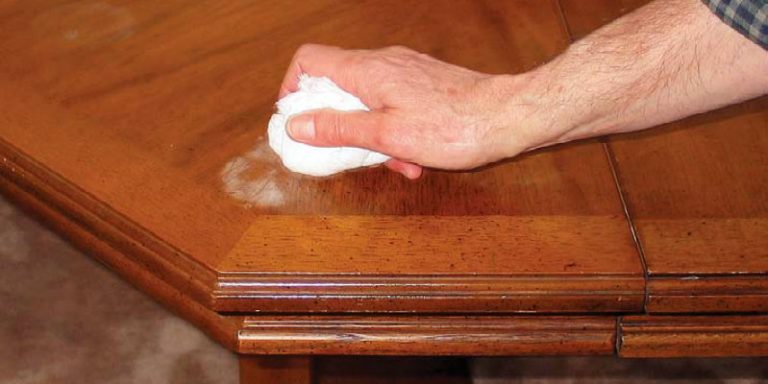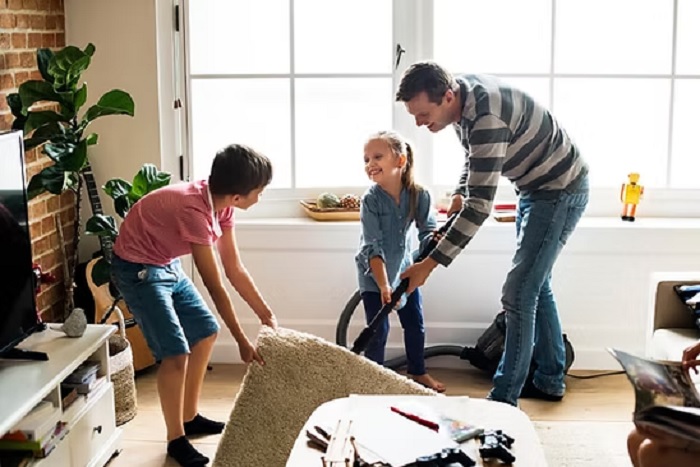
In the fast-paced modern world, maintaining a clean, organized, and environmentally conscious home is more important than ever. As people grow more aware of their impact on the planet, there has been a significant shift towards eco-friendly living. However, sustainability isn’t just about using natural products or recycling; it extends to how we organize and maintain our living spaces. Combining eco-friendly practices with an organized approach can drastically enhance your home’s functionality and aesthetic, all while reducing your ecological footprint.
In this article, we will explore how to improve your home by integrating both eco-friendly solutions and effective organizational strategies. By the end, you’ll be equipped with practical insights on how to create a space that is both sustainable and tidy—transforming your living environment into a harmonious, functional, and eco-conscious haven.
Why Eco-friendly Practices Matter
Before diving into specific strategies, it’s essential to understand why eco-friendly practices are important for the home. Adopting green solutions not only benefits the environment but also contributes to a healthier living space for you and your family. From reducing household waste to improving energy efficiency, the positive effects of sustainability are far-reaching.
Eco-friendly choices, such as using natural cleaning products, reducing energy consumption, and selecting sustainable furniture, help lower the carbon footprint of your household. Moreover, creating a sustainable environment can improve indoor air quality, minimize exposure to toxic chemicals, and reduce the strain on natural resources. Ultimately, an eco-friendly home promotes a sense of well-being, aligning your living space with both your values and the planet’s needs.
The Power of Organization
While sustainability is at the forefront of many home improvements today, organization is equally important. A cluttered space not only looks chaotic but can also increase stress and hinder productivity. Being organized brings a sense of calm to a space and helps you make the most out of your home.
An organized home improves functionality, making daily tasks easier and more efficient. It also maximizes space, so even smaller homes can feel open and comfortable. When combined with eco-friendly practices, organization elevates the home environment further, ensuring that every item has its place, minimizing waste, and promoting the reuse and recycling of materials.
How to Improve Your Home with Eco-friendly Practices and Organization
Now, let’s break down practical steps to improve your home with a combination of eco-friendly and organizational strategies. By incorporating these tips into your daily routine, you can create a living space that reflects your commitment to sustainability and a well-organized lifestyle.
1. Declutter First, Then Organize
Before implementing eco-friendly solutions, start with decluttering. A home that is overrun with unnecessary items is not only inefficient but also contributes to increased waste when those items are eventually discarded. Begin by sorting through each room, taking the time to evaluate what you really need and use. Donate, recycle, or repurpose items that no longer serve a purpose.
Once you’ve decluttered, it’s easier to organize your space and ensure that every item has a designated place. Consider using eco-friendly storage solutions such as bins made from recycled plastic, natural fibers, or upcycled materials. Baskets and containers can keep everyday items in order while also supporting your sustainability goals.
2. Opt for Sustainable Furniture
Furniture is one of the most significant investments in any home. However, not all furniture is created equally when it comes to environmental impact. When shopping for new pieces, prioritize furniture made from sustainably sourced wood or materials like bamboo. Look for certifications like FSC (Forest Stewardship Council) or Fair Trade, which guarantee ethical production practices.
Additionally, consider buying second-hand furniture or repurposing older pieces. Not only does this minimize waste, but it also adds a unique character to your home. If you have old furniture that’s still in good condition but doesn’t match your style, consider upcycling it with eco-friendly paint or fabric.
3. Eco-friendly Cleaning Solutions
One of the easiest ways to create a more sustainable home is to replace conventional cleaning products with eco-friendly alternatives. Traditional cleaning products often contain harsh chemicals that can be harmful to both the environment and your health. Instead, opt for non-toxic, biodegradable cleaners or make your own using simple ingredients like vinegar, baking soda, and essential oils.
For organizing your cleaning supplies, keep them neatly stored in reusable containers. Instead of disposable paper towels, switch to microfiber cloths, which are durable, reusable, and effective at trapping dust and dirt. Microfiber also reduces the need for harsh chemicals, as it cleans with just water, making it an eco-conscious and efficient alternative.
4. Energy Efficiency and Smart Organization
Energy efficiency is another core aspect of an eco-friendly home. By organizing your home to make the best use of natural light, you can reduce reliance on artificial lighting during the day. Arrange furniture to maximize sunlight exposure and consider using light, reflective colors for walls and furnishings to enhance brightness. Additionally, consider using energy-efficient bulbs and appliances that consume less power.
For climate control, opt for a programmable thermostat to ensure your heating and cooling systems operate efficiently. Keep air vents clear of furniture, and use heavy curtains or shades in the summer to block heat and reduce air conditioning usage. An organized approach to managing your home’s energy needs will not only reduce your carbon footprint but also lower your utility bills.
5. Waste Reduction and Recycling Stations
A significant part of an eco-friendly home involves reducing waste, and one of the most effective ways to do this is by setting up a dedicated recycling station. In your kitchen or utility room, create clear bins for paper, plastic, glass, and compostable waste. Label them to make it easy for everyone in your household to follow the system.
Moreover, consider reducing single-use plastic in your home by using reusable alternatives such as glass jars, metal straws, and cloth bags. With effective organization, these sustainable products will remain easily accessible and ready to use, helping you stay on track with your zero-waste goals.
6. Indoor Plants for Clean Air and Aesthetic Appeal
Indoor plants are an excellent way to improve both the eco-friendliness and aesthetic of your home. Not only do they add beauty and life to a space, but they also help purify the air by absorbing toxins and releasing oxygen. Choose plants that thrive indoors, such as snake plants, peace lilies, or spider plants, which are low-maintenance and effective at filtering out pollutants.
To organize your plants, create a designated plant corner or shelf where they can receive adequate sunlight. You can also repurpose old containers or jars to create plant pots, reducing waste while enhancing the natural charm of your space. Indoor plants contribute to a calm, green atmosphere, which can improve both physical and mental well-being.
7. Water Conservation Strategies
Water conservation is an important aspect of both eco-friendly living and home organization. Start by fixing any leaks in your home’s plumbing to avoid water wastage. Install low-flow showerheads, faucets, and toilets to reduce water consumption without sacrificing functionality.
Additionally, organize your bathroom and kitchen so that water-saving products are easily accessible. Having reusable water bottles and efficient dishwashing supplies on hand encourages sustainable practices while maintaining cleanliness and order.
8. Sustainable Home Decor
When it comes to home décor, choose items that are not only stylish but also eco-conscious. Consider buying products made from natural, renewable materials such as cotton, wool, or jute. Avoid synthetic materials that contribute to plastic waste and often release harmful chemicals into the environment.
For a personalized touch, create DIY décor projects using upcycled materials. You can transform old wood, fabric, or other household items into beautiful pieces, reducing waste while adding character and uniqueness to your home. Organizing your décor collection can prevent unnecessary purchases, while showcasing your sustainable style.
Final Thoughts: A Harmonious Blend of Sustainability and Order
Improving your home with eco-friendly practices and organizational strategies is an investment that benefits both the environment and your daily life. By following the tips outlined above, you can create a space that is not only tidy and efficient but also aligned with your values of sustainability. Whether it’s adopting green cleaning methods, investing in sustainable furniture, or organizing your home to reduce waste, every small change makes a difference.
The key is balance—striking the right harmony between eco-friendly solutions and an organized living space. With a thoughtful approach, you can transform your home into a sanctuary that is both beautiful and mindful of the world around you.





